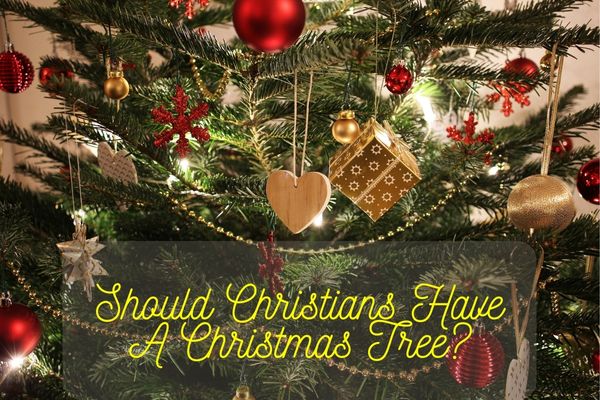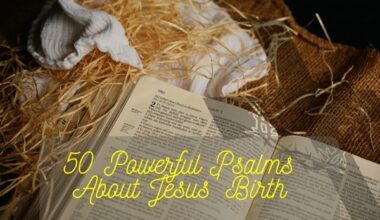Table of Contents Show
Explore the debate: Should Christians have a Christmas tree? Uncover historical roots, theological perspectives, and diverse views within Christianity. The debate surrounding whether Christians should have a Christmas tree stands at the intersection of tradition, culture, and religious beliefs. As the holiday season approaches each year, families and communities grapple with the decision of whether to adorn their homes with the iconic evergreen symbol.
The Christmas tree, a tradition with historical roots in medieval Europe, has evolved into a universal symbol of joy and festivity. However, within the Christian community, opinions on its appropriateness vary. This article takes a look into the complexities of this discussion, exploring the historical context, theological considerations, and the diverse perspectives within Christianity regarding the presence of a Christmas tree during the festive season.
Historical Perspective of Christmas Tree
The Christmas tree is a cherished and iconic symbol deeply ingrained in the festive traditions of many cultures around the world. Its roots can be traced back to various historical and cultural practices, evolving to become a central element in the celebration of Christmas.
One of the earliest associations with evergreen trees dates back to ancient civilizations, where the Egyptians, Romans, and Vikings incorporated greenery into their winter solstice celebrations as a symbol of life’s resilience amid the cold and dark winter months. However, the specific tradition of the Christmas tree, as we know it today, finds its origins in medieval Europe.
In medieval Germany, there is evidence of “Paradise Trees” being adorned with apples, representing the biblical story of Adam and Eve, which was performed during the Feast of Adam and Eve on December 24th. These trees were placed in homes and churches, marking an early form of the Christmas tree tradition. Over time, the decoration of these trees evolved to include candles, fruits, nuts, and other ornaments.
The tradition of the Christmas tree became more widespread in the 16th century when it was embraced by German Protestant reformer Martin Luther. According to legend, Luther was inspired by the beauty of the starlit sky while walking through a forest. Wanting to share this experience with his family, he cut down a fir tree, brought it home, and adorned it with candles to symbolize the stars. This tale is often cited as one of the earliest instances of using candles to illuminate a Christmas tree.
The Christmas tree gained further popularity in the 19th century, particularly through the influence of Queen Victoria and Prince Albert, who were depicted with their decorated Christmas tree in an illustration published in the Illustrated London News in 1848. This portrayal helped to popularize the custom not only in Britain but also in the United States and other parts of the world.
Today, the Christmas tree is a universal symbol of the holiday season, transcending cultural and religious boundaries. Families of various backgrounds decorate their homes with Christmas trees as a focal point of festive celebrations. The evergreen tree, often spruce, pine, or fir, is chosen for its ability to retain its green needles throughout the winter, symbolizing life and renewal.
Modern Christmas trees are adorned with an array of decorations, including ornaments, lights, tinsel, and a tree topper. Ornaments often hold personal significance, representing family memories, milestones, and traditions. The tradition of placing presents beneath the Christmas tree adds to the excitement and anticipation of gift-giving during the holiday season.
Beyond its decorative role, the Christmas tree holds deep symbolic meaning for many. It is a representation of life, hope, and the enduring spirit of joy and giving associated with the Christmas season. The act of decorating the tree and gathering around it with loved ones creates a sense of unity and shared tradition, fostering a warm and festive atmosphere that embodies the spirit of Christmas.
The relationship between Christianity and the Christmas tree is complex and multifaceted, reflecting a combination of historical, cultural, and religious influences. While the Christmas tree has become an integral part of the modern Christian celebration of Christmas, its incorporation into Christian traditions is not explicitly mandated in religious texts. Instead, the tradition has evolved over centuries, shaped by various cultural practices and historical events.
The Influence of Martin Luther
Martin Luther, a key figure in the Protestant Reformation, is often associated with popularizing the use of candles on Christmas trees. The story goes that Luther was inspired by the starlit sky while walking through a forest, leading him to decorate a tree with candles to recreate the celestial scene. This contributed to the early development of the Christmas tree tradition.
Royal Endorsement
The popularity of the Christmas tree received a significant boost in the 19th century with the illustration of Queen Victoria and Prince Albert celebrating Christmas around a decorated tree. This image, widely circulated in the media, contributed to the widespread adoption of the Christmas tree in Victorian England and beyond.
Cultural Assimilation
As Christianity spread and assimilated with local customs, the Christmas tree became intertwined with broader cultural celebrations of Christmas. While not explicitly mentioned in the Bible, the tree’s symbolism aligns with Christian themes of life, light, and hope.
Should Christians Have A Christmas Tree?
In summary, the question Should Christians Have A Christmas Tree is one of cultural adaptation and evolution. The tree’s incorporation into Christian celebrations reflects a blend of historical traditions, cultural practices, and the symbolic significance associated with the season of Christmas. While not universally embraced by all Christian denominations, the Christmas tree has become a widely accepted and cherished element of the festive season for many Christians around the world.
Views on the Christmas tree within Christianity vary among denominations and individual believers. Some Christians view the tree as a cultural and festive symbol that enhances the celebration of the birth of Jesus. Others may choose not to incorporate it into their celebrations, citing concerns about potential pagan origins or the absence of explicit biblical endorsement.
Conclusion
In concluding the discourse on whether Christians should have a Christmas tree, it is evident that the decision is deeply personal and reflective of diverse interpretations of faith and tradition. The historical journey of the Christmas tree, from its medieval origins to its present-day ubiquity, showcases the malleability of cultural practices within the context of Christianity.
Examining the question: Should Christians have a Christmas tree? Gain insights into the diverse perspectives within Christianity on this festive tradition.
While some Christians may see the Christmas tree as a joyful expression of the season, others might approach it with caution, mindful of potential pagan influences or a desire for a more explicitly biblically rooted celebration. Ultimately, the choice to have a Christmas tree as a part of Christian celebrations underscores the dynamism of cultural and religious traditions, inviting believers to navigate their faith in a manner that resonates authentically with their beliefs and values.
Frequently Asked Questions
1. Is it a sin for Christians to have a Christmas tree?
There’s no single answer, as different Christian denominations hold varying perspectives. Some see the tree as a pagan symbol and avoid it, while others view it as a festive decoration unconnected to its historical roots. Ultimately, the decision rests with individual Christians and their interpretations of faith and tradition.
2. Do Christmas trees have any religious meaning for Christians?
Though many associate Christmas trees with Christian symbolism, their origin lies in pre-Christian traditions. However, some Christians may imbue it with personal religious meaning, perhaps seeing it as a representation of Christ’s light and ever-growing hope. It’s essentially up to individual Christians to determine any religious significance they find in the tree.
3. Can Christians celebrate Christmas without a tree?
Absolutely! Christmas, at its core, celebrates the birth of Jesus Christ. While festive traditions like trees add to the joy, they’re not essential to commemorating the religious significance of the holiday. Christians can focus on attending church services, spending time with loved ones, and engaging in acts of charity, all without a Christmas tree present.








